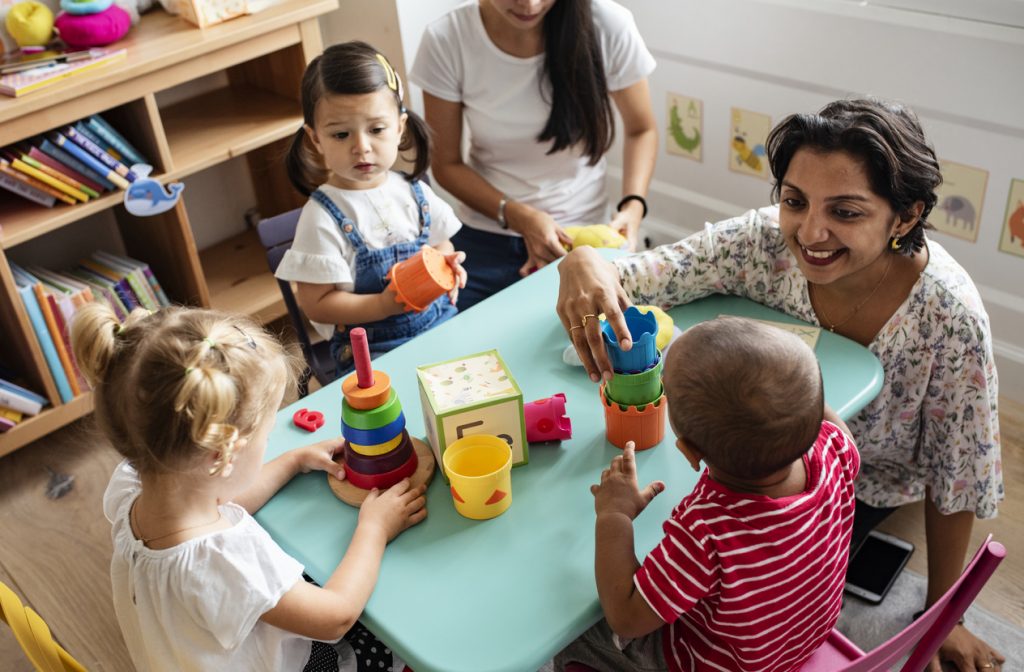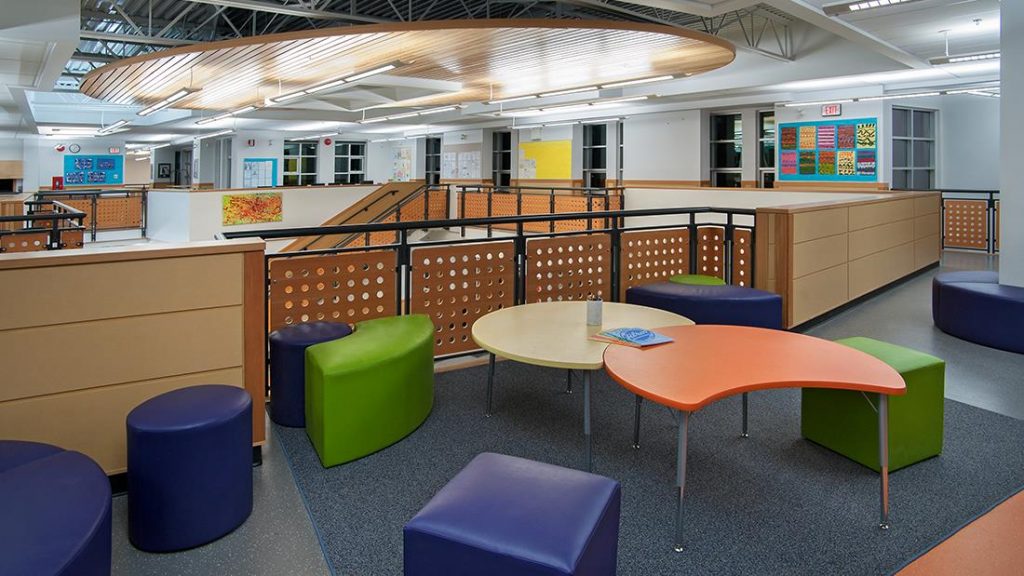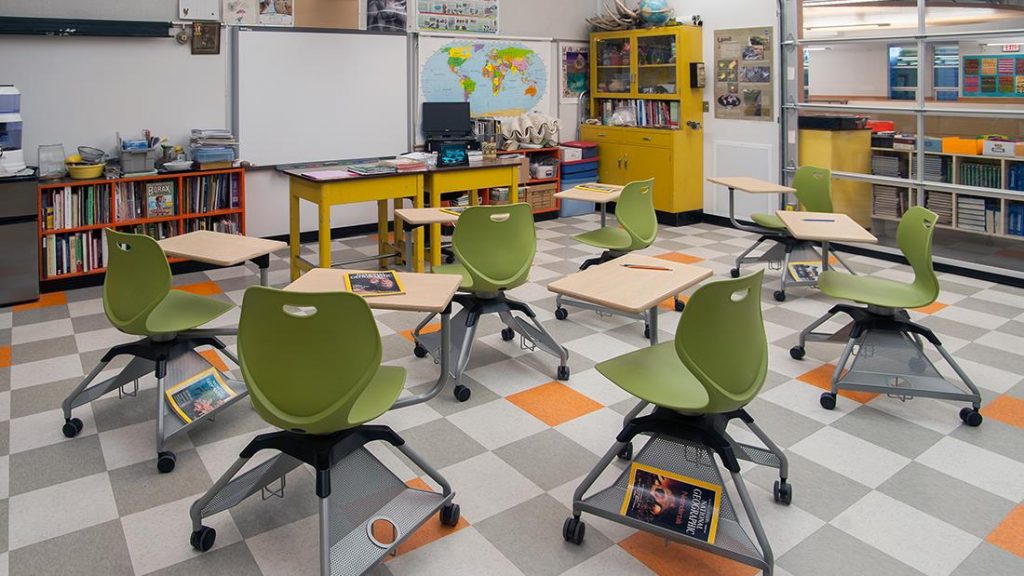
03 Jun 4 Tips for Arranging Classroom Furniture

A classroom is more than a space for learning. When properly planned and considered, classrooms can serve as sanctuaries from the stresses, pressures and distractions of the outside world. In the latest blog from JMC Furniture, we look at how arranging classroom furniture can create an environment that fosters creativity, productivity and social growth. See the full piece below and don’t forget to follow Jonathan Morgan & Company for more interior design insights!
How we arrange our classroom furniture may seem like an arbitrary question. However, the question is actually of great importance when it comes to classroom performance and student welfare. The fact is that furniture placement reflects a teacher’s view of how best to teach; how to maintain discipline and how students concentrate. Regardless of the teacher’s view, one fact remains: when a classroom is comfortable, students learn more.
Whilst furniture arrangement ultimately depends on teaching style, we’ve picked out four top tips for improving any learning environment. Check them out…
1.Facilitate Collaborative Learning

The classrooms of the past placed a heavy focus on singular desks, separating students into orderly lines. Whilst this may have allowed for increased discipline and order in the classroom, this arrangement does little for collaborative learning. Teachers can take the first step towards a collaborative approach by arranging furniture in a way that brings the class together.
Here at Jonathan Morgan & Company, experience has taught us that a mixture of desk arrangements can create a classroom environment that is dynamic, flexible and collaborative. We recommend arranging student desks and chairs in a combination of pairs and four-square blocks. For a little variety, this can be easily adapted into a horseshoe formation, placing pupils in a way which directly faces the teacher but also allows free conversation. The style and nature of your class will be reflected in the seating arrangements, and this should change each year.
2. Create a Social Space

Learning isn’t always about listening and taking notes. A core element of human growth is to learn socially, and history has previously left this demand to the playground and play areas. However, studies have shown that learning environments are more productive when they allow for a mixture of educational and social learning. But how can teachers strike this balance by arranging classroom furniture?
The key is to create a conversational space where children can relax, express themselves and exchange views and ideas. Our advice is to allocate an area of your classroom for soft seating, which can be easily moved and adapted to accommodate varying activities and class sizes. When it comes to selecting an area, try to choose a location that is well-lit and distinctly separate from the teaching area. Durability and ease-of-cleaning is a key consideration here – we recommend going for non-porous materials such as those supplied by JMC Furniture in the image above.
3. Don’t Push Furniture Against Walls

One of the most commonly made mistakes when arranging classroom furniture is keeping tables, desks and chairs pushed against the walls. Whilst the size of your classroom will dictate how far you can pull your furniture away from the walls, it’s essential to give your furniture some much-needed space by allowing a few inches between your furniture and the walls. Contrary to popular belief, this will create the effect of a larger space rather than a cramped one.
Of course, some teachers may be lucky to work within a larger teaching environment. For more spacious classrooms, we recommend arranging furniture in a way which focuses conversation into the middle of the room, just like the classroom we designed in the image above. When it comes to productive learning, space is what really counts.
4. Prioritise Flexible Seating
Modern teaching is all about flexibility. Whilst this can mean swapping around desking arrangements and adapting your teaching style, you can embed flexibility into your classroom with the right choices and arrangement of furniture. There’s a key phrase to bear in mind here, and that is ‘stackability’.
Dynamic classrooms require seating that can be easily moved, easily cleaned and easily stacked. They also require furniture that is durable and ready to stand the test of constant moving, cleaning and general use. The N2 Stacking Chair by JMC Furniture is, by example, hard-wearing, easily cleaned and totally lightweight.
Flexible classrooms must also facilitate concentration, and how to do this will depend from student to student. Here at Jonathan Morgan & Company, we recommend the FOKUS Stool for its adaptability. Fully adjustable and equipped with a rocking, wobbling seat, this durable piece allows students to move freely while they work, learning in a way which suits their particular needs.
Rethink Your Classroom with JMC Furniture
Classrooms don’t have to be clinical. JMC Furniture offers the inventory and expertise required to transform classrooms into 21st century learning environments. From teachers desks, chairs and tables to desks, storage areas and soft seating, choose Jonathan Morgan and discover why we’re trusted by schools and libraries throughout Canada. To equip your classroom for productive learning, get in touch with our expert team for a free consultation.



Sorry, the comment form is closed at this time.